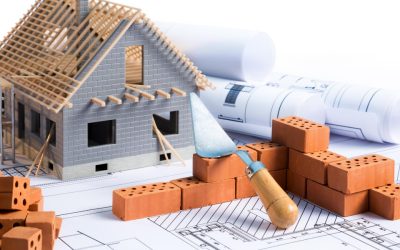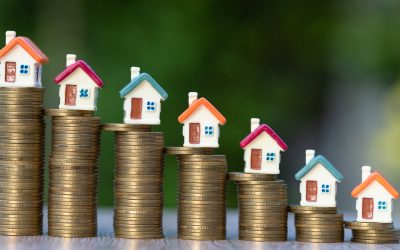Renovating your rental properties can enhance value, attract top tenants, and increase rental income. Upgrades like modern amenities and energy-efficient features boost property appeal and market competitiveness.
Eco-friendly renovations lead to lower utility costs and attract environmentally conscious renters. However, renovation challenges include project delays, unexpected expenses like outdated wiring, and budget overruns.
Careful planning, cost analysis, and essential time management are vital. Consider the benefits of renovations while being mindful of potential drawbacks to make informed decisions for your rental investments.
Key Takeaways
- Renovations increase property value and rental income.
- Eco-friendly upgrades reduce utility bills and attract tenants.
- Challenges include time-consuming processes and unexpected expenses.
- Budget constraints require careful planning and cost-benefit analysis.
- Time management is crucial to avoid disruptions and maximize rental income.
Benefits of Renovating Rental Properties
Renovating rental properties can greatly enhance profitability and asset value for property owners. By investing in upgrades, you not only increase the appeal of your rental units but also attract quality tenants willing to pay a premium for well-maintained spaces. These improvements not only increase property value but also lead to higher rental yields and profits in the long run. Aesthetically pleasing and functional properties are more likely to retain tenants, reducing vacancies and turnover costs.
Moreover, renovating rental properties allows you to add value by staying competitive in the market and commanding higher rental rates. Upgrades such as eco-friendly renovations not only attract environmentally conscious tenants but also reduce greenhouse gas emissions and enhance energy efficiency, cutting down utility costs for both you and your tenants. However, it’s essential to carefully manage renovation costs to avoid budget overruns and unexpected expenses, ensuring that the benefits outweigh the drawbacks in the long term.
Attracting Quality Tenants
Improving the appeal and functionality of your rental properties through quality renovations can greatly increase the likelihood of attracting responsible tenants who value well-maintained living spaces. Upgraded features such as modern kitchens and energy-efficient appliances are particularly appealing to higher caliber renters seeking quality rental properties. These renovations not only attract tenants initially but also contribute to long-term tenant retention.
When property improvements enhance both aesthetics and functionality, they signal to potential tenants that the landlord is committed to maintaining a high standard, thereby attracting quality tenants who appreciate well-cared-for properties. Quality tenants are more inclined to stay and renew their leases in rental properties that offer attractive amenities and upgrades, showcasing the importance of investing in renovations to attract and retain responsible renters who value the quality of the property.
Increasing Rental Income
To maximize your rental income potential, consider how renovations can directly impact the market value of your property. Upgrading your rental property through renovation projects can greatly increase your rental income. By attracting tenants willing to pay higher prices for updated features and amenities, you can justify charging higher monthly rent, ultimately boosting your overall rental yield.
Even minor renovations can lead to substantial rent hikes, offering landlords a quick return on their investment. Additionally, certain renovations that provide a high return on investment can substantially raise the property value. This increase in property value translates to higher rental income over time, making renovations a strategic way to enhance your rental income streams.
Additionally, with tax deductions available for long-term personal property improvements, renovating your rental property not only increases your rental income potential but also offers financial benefits in the form of tax relief.
Enhancing Property Value
Enhancing the value of your rental property can be achieved through cost-effective upgrades, attracting quality tenants, and reaping long-term investment benefits. Market data shows that strategic renovations can lead to a substantial increase in property value, making it a worthwhile financial decision.
Cost-Effective Upgrades
Consider integrating cost-effective upgrades in your rental property to enhance its market value without overspending. By strategically renovating your rental, you can boost the value and attract higher-paying tenants. Simple enhancements like fresh paint and new fixtures can make a significant impact. Energy-efficient upgrades not only reduce utility costs but also appeal to eco-conscious renters. Upgrading key features such as kitchen appliances or flooring can provide a high return on investment. It is essential to keep costs in check while making these improvements to make sure they align with the rental market demands, including considerations for damp proofing cost, which may vary depending on the extent of the property’s needs and location.
Here is a table highlighting some cost-effective upgrades to contemplate:
| Upgrade | Impact | Cost |
|---|---|---|
| Fresh Paint | Aesthetically pleasing | Low |
| LED Lighting | Energy-efficient | Moderate |
| Smart Thermostats | Appeal to tech-savvy renters | Moderate |
| Kitchen Upgrades | High ROI | Moderate |
Attracting Quality Tenants
Upgrading key features in your rental property not only enhances its market value but also attracts quality tenants seeking modern amenities and a higher standard of living. Renovations play a vital role in enhancing property value and aesthetic appeal, making your property more appealing to potential tenants.
In competitive rental markets, properties with upgraded features stand out and draw in desirable tenants looking for a well-maintained and modern living space. Quality tenants are more likely to be attracted to properties that have been renovated, as they signal a commitment to providing a comfortable and updated living environment.
Long-Term Investment Benefits
Investing in the renovation of your rental property has been shown to greatly boost its overall value, providing long-term benefits such as increased equity growth and higher resale potential. Renovating rental properties can lead to up to a 20% increase in property value, offering a substantial return on investment.
By enhancing property features and amenities, you can attract higher quality tenants, ensuring a steady stream of rental income over time. Additionally, these improvements can result in lower maintenance costs and higher appreciation, further solidifying the property’s long-term investment appeal.
Focusing on long-term benefits through renovations also gives you a competitive edge in the rental market, increasing demand from tenants and positioning your property as a desirable option for prospective renters.
Eco-Friendly Renovations
Embracing eco-friendly renovations in rental properties can greatly reduce greenhouse gas emissions and enhance energy efficiency. By incorporating sustainable materials and energy-efficient systems, you can create a more environmentally friendly living space while also reaping financial benefits. Consider the following:
- Lower Utility Bills: Upgrading to energy-efficient appliances and systems can lead to significant savings on utility costs for both landlords and tenants.
- Enhanced Sustainability: Installing solar panels or utilizing sustainable materials not only reduces the property’s environmental impact but also increases its overall sustainability for the long term.
- Attract Eco-Conscious Tenants: Eco-friendly renovations can draw in tenants who prioritize living in environmentally responsible spaces, potentially leading to higher tenant retention rates.
- Improved Energy Efficiency: Implementing water-saving fixtures and insulation upgrades can further boost the property’s energy efficiency, reducing waste and positively impacting the environment.
Drawbacks of Renovating Rentals
While renovating rental properties can offer numerous benefits, it’s important to recognize the drawbacks that landlords may encounter during the renovation process. One significant drawback is the costs involved. Unexpected expenses can arise, impacting the overall profitability of the rental property. Landlords often face the challenge of going over budget due to unforeseen circumstances, such as hidden structural issues or material price increases.
Moreover, renovating rental properties demands a substantial amount of time and effort from landlords. The process can be time-consuming, requiring meticulous planning and coordination of various tasks. Additionally, factors like inflation can lead to delays and escalate renovation costs, further adding to the challenges faced by landlords.
Renovation complications are another drawback that landlords may encounter. Managing unexpected issues during renovations can disrupt rental income and pose additional obstacles. It’s essential for landlords to be prepared for potential complications and have contingency plans in place to mitigate their impact on the renovation process.
Unexpected Renovation Expenses
Unexpected renovation expenses pose a substantial financial risk to landlords undertaking rental property renovation projects. When planning for renovations, it’s vital to ponder the possibility of unforeseen circumstances and hidden issues that can drive up costs.
Here are some key points to ponder regarding unexpected renovation expenses:
- Renovation costs can spiral out of control if unforeseen challenges like structural damage, plumbing issues, or electrical problems are encountered during the renovation process.
- Hidden issues such as outdated wiring, mold, or termite damage may only surface once the renovation is underway, leading to additional unexpected expenses.
- Factors like sudden material price increases, higher-than-expected labor costs, and unexpected permit fees can have a significant impact on the overall renovation budget.
- To safeguard against these unforeseen costs, landlords should allocate contingency funds in their budget and conduct thorough inspections before starting the renovation to better anticipate and mitigate unexpected expenses.
Budget Constraints and Overpricing
Addressing budget constraints and overpricing in rental property renovations requires careful planning and strategic decision-making to ensure the best financial outcomes. When dealing with incomplete renovations due to budget constraints, it is essential to prioritize areas that directly impact the property’s rental potential. Conversely, overpricing resulting from extensive renovations can deter potential tenants, leading to prolonged vacancy periods and financial losses. To balance renovation costs and rental potential, a thorough cost-benefit analysis is essential. The table below illustrates the correlation between renovation costs, rental potential, and overpricing to guide your decision-making process.
| Renovation Costs | Rental Potential | Overpricing |
|---|---|---|
| High | Low | Likely |
| Moderate | Moderate | Most favorable |
| Low | High | Unlikely |
Time and Effort Considerations
To optimize the financial outcomes of renovating rental properties, careful consideration of time and effort factors is essential. Renovating rental properties can be an intensive process that demands significant dedication and resources. Here are some key points to ponder:
- Time Management: Renovation projects involve meticulous planning, coordination of tasks, and supervision of contractors. Landlords must invest time in project management, decision-making, and property inspections throughout the renovation process.
- Effort Allocation: Renovations require landlords to allocate effort towards overseeing the project, addressing unexpected issues, and ensuring quality standards are met. This effort extends beyond physical labor to encompass decision-making and problem-solving.
- Rental Income Impact: Delays in renovations can directly impact rental income, making efficient time management essential. Landlords must schedule renovations strategically to minimize disruptions and guarantee a swift return to renting out the property.
- Budget and Timeline Constraints: Efficient time and effort management are vital to completing renovations within budget and adhering to established timelines. Failure to do so can lead to financial losses and extended vacancy periods.
Frequently Asked Questions
What Are the Disadvantages of Renovation?
Renovating can lead to costly mistakes, unexpected issues, and decreased rental income. It’s time-consuming and disruptive to tenants. Thoughtful planning is essential to avoid these pitfalls and guarantee a successful renovation process.
Is Renovating Apartment Worth It?
Renovating an apartment can be worth it when considering cost analysis, tenant satisfaction, market value, maintenance requirements, and return on investment. Upgrades attract better tenants, increase rental income, and improve property value.
Is Renovating a Good Investment?
Considering a cost analysis, return on investment, market trends, contractor selection, and property value, renovating can be a good investment. Upgraded rentals attract better tenants, increasing income potential and property value in the long term.
Is Renovating an Old House Worth It?
Renovating an old house can be worth it if cost considerations align with potential returns on investment. Assess the time commitment, scope of work, and quality of materials. Consider market value, rental demand, property location, and hiring professionals wisely.
Conclusion
To sum up, upgrading rental properties can provide numerous benefits such as attracting quality tenants, increasing rental income, and enhancing property value.
However, it’s crucial to contemplate the potential drawbacks such as unexpected renovation expenses, budget constraints, and the time and effort required for renovations.
By carefully weighing the pros and cons, landlords can make informed decisions on whether renovating rental properties is the right choice for their investment goals.
- Rent-to-Rent Schemes: Hidden Dangers Lurk - July 6, 2024
- How to Sell Your House Fast in Kent - July 5, 2024
- 7 Tips to Sell Your House Fast - July 4, 2024


